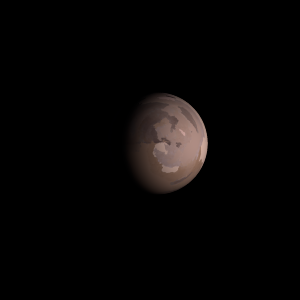|
|
Space Astro
|
Info for exoplanet "Jwei"
| Scientific (actual) data |
|---|
| Name | Kepler-1095 b |
| Planet status | Confirmed |
| Radius | 0.108 |
| Orbital period | 4.27103 |
| Discovered | 2016 |
| Updated | 2021-02-05 |
| Tconj | 2454970 |
| Publication | Announced on a website |
| Detection type | Primary Transit |
| Alternate names | 2MASS J19330298+4121544 b, K02100.01, KIC 6047072 b, KOI-2100 b, KOI-2100.01, WISE J193302.93+412154.7 b |
| Star name | Kepler-1095 |
| Right ascension | 293.26° |
| Declination | 41.37° |
| Mag j | 13.332 |
| Mag h | 12.949 |
| Mag k | 12.899 |
| Star distance | 758 |
| Star metallicity | -0.09 |
| Star mass | 0.94 |
| Star radius | 0.92 |
| Star age | 4.47 |
| Star temperature | 5658 |
| Star alternate names | 2MASS J19330298+4121544, KIC 6047072, KOI-2100, WISE J193302.93+412154.7 |
| Wikipedia article | Kepler-1095 b |
Back
| |
| Fictional info (?) |
|---|
| Suggested name | Jwei |
| Planet type | Cold planet |
| It was the one of the first exoplanets visited by a spacecraft, and one of the first to be successfully landed on. |
| Atmosphere | Ethane | 79% |
| Hydrogen peroxide | 13% |
| Ammonium hydrosulfide (NH4SH) | 4.6% |
| Krypton | 2.6% |
| Atmospheric pressure | 40 bar |
 |
| Moon | Ensaohyi-pyoxad | Large irregular crater-filled asteroid |
| Laoxwei-chwei | Very small potato shaped gaseous moon |
| Ennying-m | Small almost round oceanic asteroid |
| Aigweng Shyeg | Small slightly egg-shaped crater-filled comet |
| Mwangl Wo | Small slightly egg-shaped gaseous moon |
| Google search for Jwei |
|
Website by Joachim Michaelis
|
|
|
|